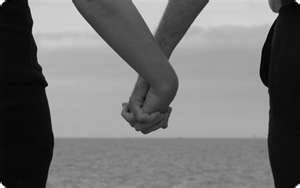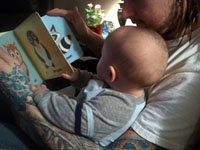What Are Personal Boundaries and How Do We Establish Them?

Personal boundaries are the limits we establish for ourselves that demand respect from the people in our lives. This is how we protect ourselves from being manipulated, used or violated by others. Setting healthy personal boundaries is necessary for healthy self-esteem and self-respect. When we allow others to violate our boundaries, we are out of integrity with ourselves and it causes us discomfort. In extreme cases we become ill.
It was years before I understood the concept of personal boundaries. Now that I do, there is no going back.
My husband and are fortunate right now to have the opportunity to look after our newest grandson, Peter, for one or two days per week. He is very cute, very smart and showing signs of pushing boundaries. He is 17 months old and at the perfect age to be testing out the adults in his life. And testing us is what he is doing.
The challenge for Peter is that his mother suffers from Complex Post Traumatic Stress Syndrome (CPTSS). She has no personal boundaries. She was brought up in an extremely abusive environment where boundaries did not exist. She can’t teach what she doesn’t know. She is a single mom.
Peter’s father, my son, is his primary day care. He, too has noticed that Peter thinks we all are his personal robots. It is unfortunate, and so the challenge for us when we look after him is to teach him to respect others and at the same time enjoy his company and have him enjoy being with us.

We all need to know that we have a right to personal boundaries. In fact, how we allow others to treat us is our responsibility. If we don’t protect our personal boundaries, we lose our sense of worth and tend to rely on others to define us. When we allow our boundaries to be violated, we are stating that other people’s needs are more important than our own.
One of the hardest things, it seems, for people to do is to say no. Such a small word with such a big impact! We are people-pleasers and often, we put our own needs to the back to accommodate everyone else. Eventually, it becomes hard to identify situations that are unacceptable to us. We have ignored the unpleasant feelings associated with boundary-crossing, for so long that things have become foggy. All we know now is that we are not feeling good about something.
By not teaching children about boundaries, we are doing them an injustice. It is their right to know and understand that we all need and deserve to establish personal boundaries. A child with no boundaries is easy to identify in a group situation. He often is left out and, unfortunately, picked-on for his behavior.
Here are some points to remember to help your child to learn personal boundaries:
1. Be aware of your own leadership style. Do you establish and maintain your own personal boundaries.
2. Respect your children’s boundaries and set an example for them by saying no when appropriate to do so.
3. Emphasize the fact that it is a human right to have boundaries and that other people’s needs are not more important than their own.
4. Remember that self-esteem is the most important thing that you can help your child to develop. With that they will trust and believe in themselves.
When we think that we won’t be liked for standing up for ourselves, the opposite occurs. We are loved, respected and admired, and most often, people will emulate us.

Return from Personal Boundaries to Family Behavior Patterns
Return from Personal Boundaries to Home Page





